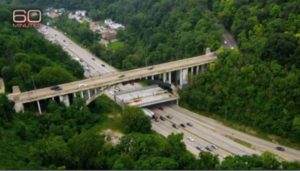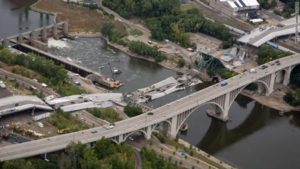America's Failing Infrastructure: A Growing Crisis in Bridges and Roads
America’s infrastructure is more than just roads and bridges—it’s the foundation of our daily lives. From commuting to work to transporting goods, our transportation systems are essential for connecting people, businesses, and communities. Yet, despite its importance, much of this critical network is in serious disrepair. A 2013 report by the American Society of Civil Engineers (ASCE) revealed a troubling reality: 1 in 9 bridges in the U.S. is structurally deficient. That means over 70,000 bridges across the country need urgent attention. These aging structures are not just outdated—they’re a safety hazard. The last major federal investment in infrastructure came in 2009 through the stimulus package, but since then, there has been little progress, and no new legislation has emerged to address the growing problem. Pittsburgh, often called “The City of Bridges,†serves as a stark example of the national crisis. With over 4,000 bridges, many built in the early 20th century, the city faces a severe infrastructure challenge. Some bridges are over 80 years old—far beyond their intended lifespan. The Liberty Bridge, for instance, was constructed in 1928 and now stands at 86 years old. To prevent accidents, engineers have had to install steel supports to catch falling debris from deteriorating structures. According to Andy Herman, a former president of ASCE, Pennsylvania has one of the worst infrastructure situations in the country. Every year, one out of every four bridges in the state falls into the structurally deficient category. In Philadelphia, a 22-mile stretch of I-95 includes 15 such bridges, with repair costs estimated at $7 billion—far exceeding current funding levels. In response, some states are beginning to take action. There's a growing push for innovative solutions that can help close the funding gap. Private companies like HJ3 Composite Technologies have stepped in with advanced materials and methods. Since 2001, HJ3 has used carbon fiber technology to reinforce bridges and overpasses, successfully repairing over 1 million square feet of infrastructure. Their approach reduces replacement costs by up to 80%, making it a smart and sustainable choice. As concerned citizens, we must continue to raise awareness about this issue. Infrastructure isn’t just about roads and bridges—it’s about jobs, safety, and economic growth. By demanding better investment and supporting innovative solutions, we can help build a stronger future. Investing in infrastructure can:- Create jobs
- Strengthen communities
- Boost commerce


Metal Screw Lid Machine,Screw Cap Making Machine,Screw Cap Production Lines,Aluminum Screw Cap Making Line
Zhoushan Golden Wing Machinery Co., Ltd. , https://www.goldenwingmachines.com